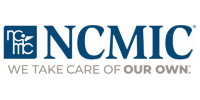The Comparative Effect of Episodes of Chiropractic and Medical Treatment on the Health of Older Adults
Category: Chiropractic in the News
Apr
16
Abstract
Objectives
The comparative effect of chiropractic vs medical care on health, as used in everyday practice settings by older adults, is not well understood. The purpose of this study is to examine how chiropractic compares to medical treatment in episodes of care for uncomplicated back conditions. Episodes of care patterns between treatment groups are described, and effects on health outcomes among an older group of Medicare beneficiaries over a 2-year period are estimated.Methods
Survey data from the nationally representative Survey on Assets and Health Dynamics among the Oldest Old were linked to participants' Medicare Part B claims under a restricted Data Use Agreement with the Centers for Medicare and Medicaid Services. Logistic regression was used to model the effect of chiropractic use in an episode of care relative to medical treatment on declines in function and well-being among a clinically homogenous older adult population. Two analytic approaches were used, the first assumed no selection bias and the second using propensity score analyses to adjust for selection effects in the outcome models.Results
Episodes of care between treatment groups varied in duration and provider visit pattern. Among the unadjusted models, there was no significant difference between chiropractic and medical episodes of care. The propensity score results indicate a significant protective effect of chiropractic against declines in activities of daily living (ADLs), instrumental ADLs, and self-rated health (adjusted odds ratio [AOR], 0.49; AOR, 0.62; and AOR, 0.59, respectively). There was no difference between treatment types on declines in lower body function or depressive symptoms.Conclusion
The findings from this study suggest that chiropractic use in episodes of care for uncomplicated back conditions has protective effects against declines in ADLs, instrumental ADLs, and self-rated health for older Medicare beneficiaries over a 2-year periodSource




